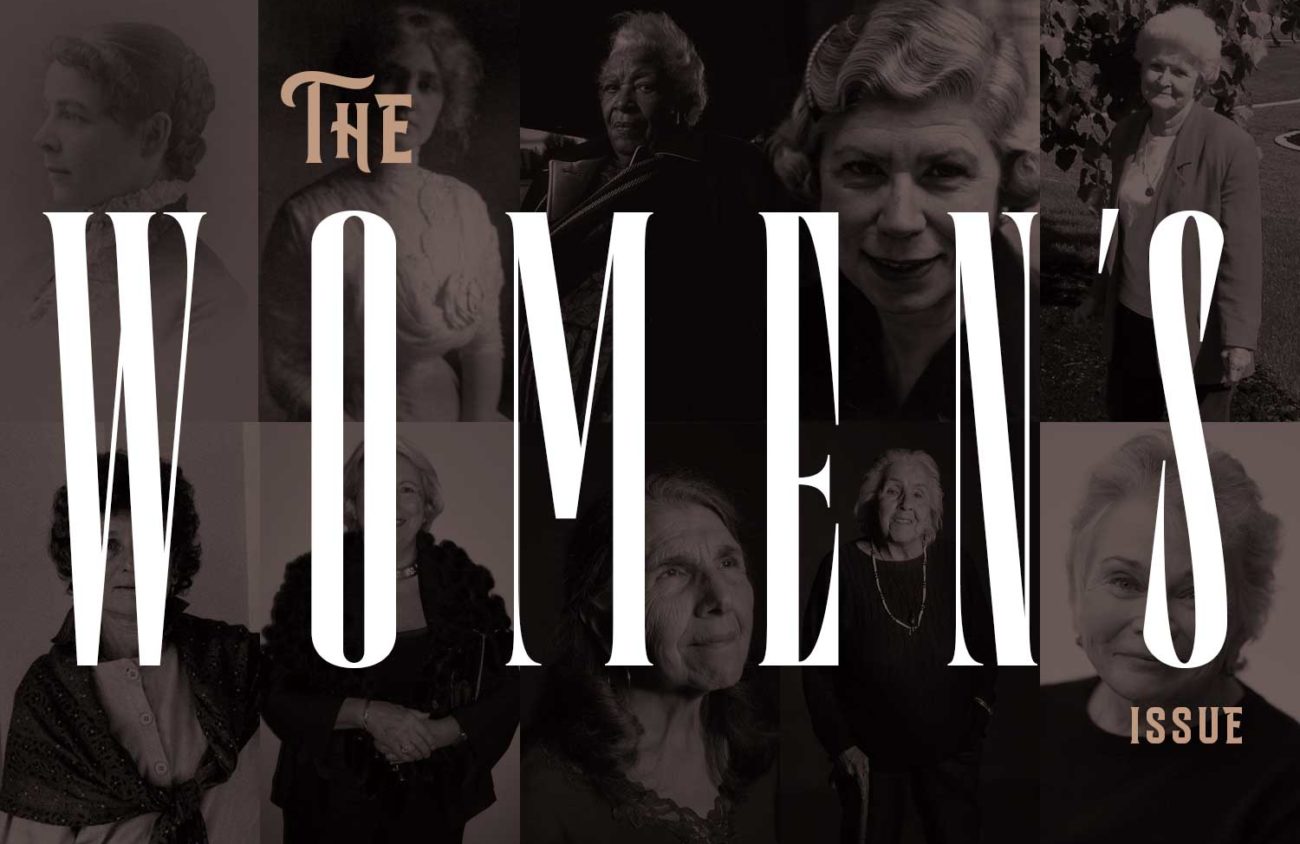We’re smack in the middle of Women’s History Month, a national tradition begun during the Jimmy Carter administration, and it’s time for a thought experiment. Let’s imagine Eugene without Ruth Bascom: No biking/walking trails along the Willamette River. How about Lotte Streisinger? Take her away and you lose our Saturday Market. Start playing with this idea, and in a heartbeat, you can come up with dozens of women who’ve influenced the physical and cultural landscape.
Today we’re starting with just 10. These women shaped our corner of the world. They built businesses and nonprofits. Their art made our spirits soar. Their public policies shaped our city. They built up a community for those who didn’t have a seat at the table. They all have something in common: Whatever their area of expertise or interest, they loved this sweet spot in the southern Willamette Valley. And they imagined that it could be even better. More importantly, they brought their dream into everyday reality.
In a perfect world, the list would be far longer: Bertha Holt (founder of Holt International Children’s Services), Martha Walters (43rd chief justice of Oregon), Kitty Piercy (former Eugene mayor), Jean Tate (real estate agent and developer), Susan Castillo (former Oregon Superintendent of Public Instruction), Nancy Fadeley (former state representative), Susan Sygall (CEO and co-founder of Mobility International USA), Bev Smith (former Oregon women’s basketball player, coach and now executive director of KidSports), Ginevra Ralph (one of the founders of The Shedd) and Anita Johnson (co-owner of Eugene Weekly) all come to mind.
But let’s not let the perfect be the enemy of the good.
Consider this list an invitation to come up with your own. Google around. Make some notes. Ask your friends. Trade stories. Share them widely. Then raise a glass to the women who worked on our behalf, always in concert with others, and let them inspire you on your own journey to make our corner of the world an even better place.
Susan Palmer lives in and occasionally writes about Eugene.
Enlarge
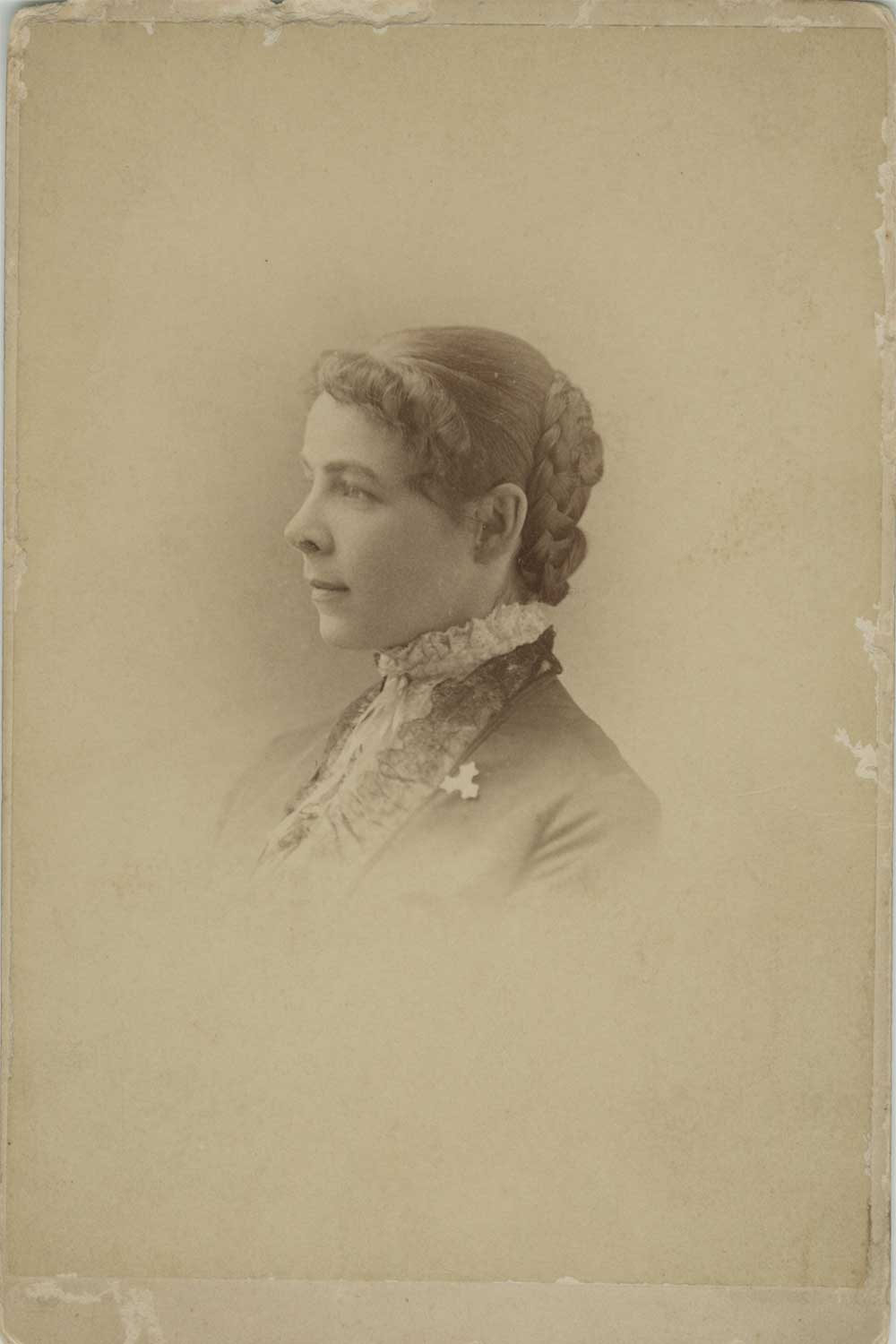
Physician
Alice Hall Chapman
(1863-unknown)
Alice Chapman studied medicine at a women’s college in Pennsylvania and married an academic who became the second president of the University of Oregon. She founded a women’s club with a goal of creating a place for scholarly discussions back when Eugene was still a mud bog of a place and the university wasn’t yet 20 years old. The club also started a small lending library in Eugene. In 1904, the club sought and obtained Oregon’s first Carnegie Library grant from philanthropist Andrew Carnegie, who funded 1,689 libraries across the country between 1883 and 1929. The library was built in 1906 at the corner of Willamette Street and 11th Avenue. The Fortnightly Club donated its own lending library to the new building. The club still exists today and contributed to the financing of Eugene’s second library at Olive Street and 13th Avenue in 1959 and to the current library at Olive and 10th, including a $35,000 gift for the John Rose-designed stained glass window.
Chapman, who was among just a handful of women physicians in Oregon at the time, merits a curious single mention in The History of Eugene, a book originally published in 1949: “The first social upheaval in town was Mrs. Chapman, President Chapman’s wife. She dared to wear heavy shoes right into the best homes while other women wore rubbers and took them off from dainty shoes.”
Enlarge
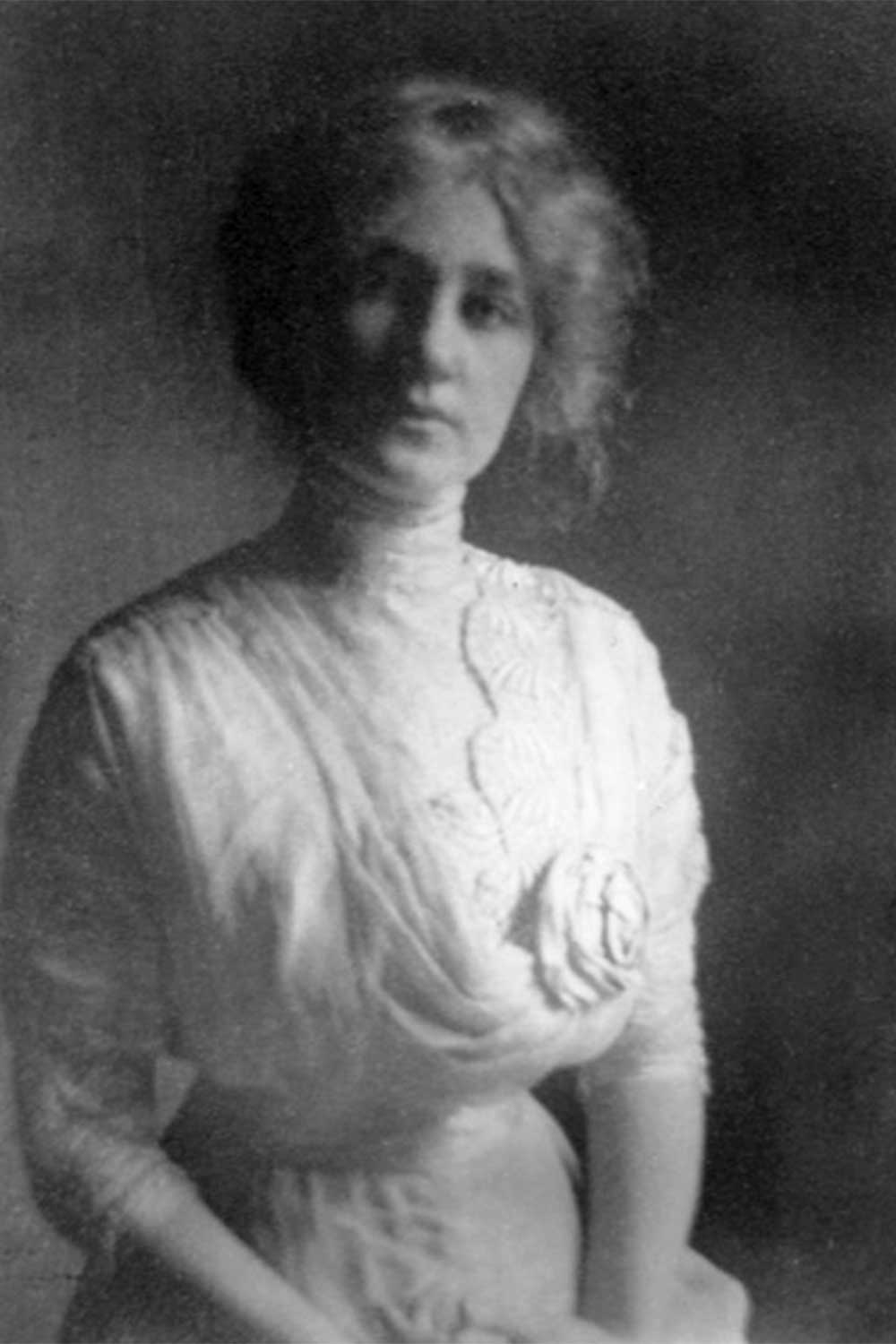
Artist
Maude Kerns
(1876-1965)
Maude Kerns brought art to people and people to art. Born in Portland and educated in Eugene, Professor Kerns was the first UO dean of the Department of Art Education. A vibrant artist herself, she worked during the explosively creative turn from the 19th to the 20th centuries, a time when abstract art in all its fascinating iterations was shouldering aside more representational work. Kerns’ work reflected her times. There are traditional seascapes, tidy woodcuts, impressionistic landscapes, and always a stunning use of color. But she is best known for her non-objective art, work still housed in permanent collections in Pacific Northwest museums as well at the Guggenheim Museum in New York City.
Kerns wanted everyone to have the opportunity to create art. She was a co-founder of the Eugene Arts Center, now named after her — a place whose art galleries come alive with regular shows, like the current Plein Air Painters of Lane County Invitational. Equally important: the art classes. Kerns wanted for each of us to experience the wonderful widening of spirit that creativity releases. For a quick look at the range of Kerns’ work, the excellent art blog Fifty-Two Pieces (FiftyTwoPieces.blogspot.com) is a good place to start. The Maude Kerns Art Center always has one of her pieces on display, but periodically shows more.
Enlarge
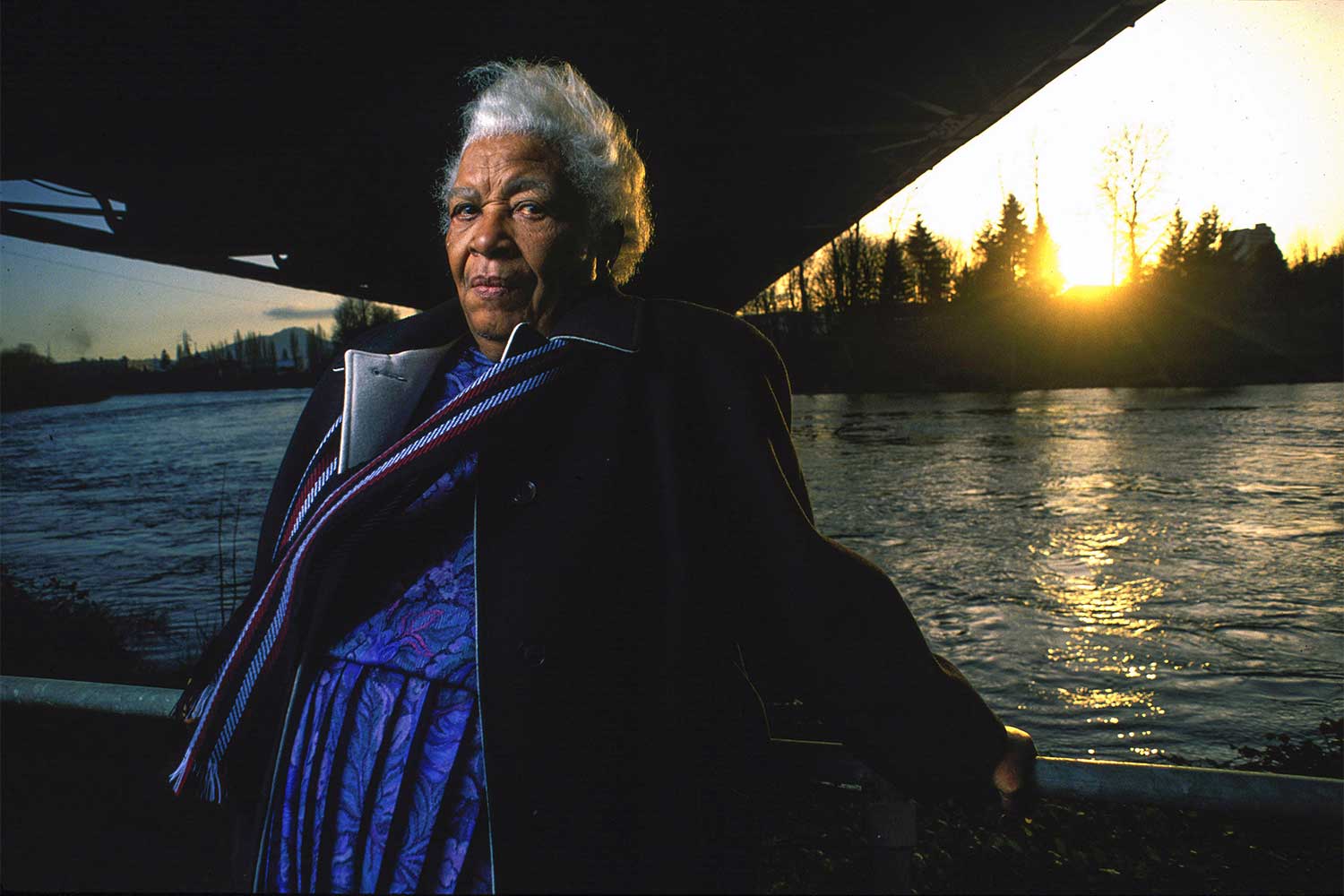
Black Matriarch/Activist
Mattie Reynolds
(1918-2010)
Imagine raising 10 children on the outskirts of a town that did not want you. Mattie Reynolds and her husband, Sam, came to Eugene from Louisiana in 1943 seeking the basics: a safe place to raise a family, work, a church, a voice in community affairs and the respect of others. Because they were Black, they had to fight for each of these basics. Eugene — like the rest of Oregon — had a well-entrenched racism dating back to exclusion laws that made it a crime for Blacks to live in Oregon.
Eugene property owners would not rent or sell to Black families. Their shacks on the outskirts of Eugene were bulldozed away to make room for the Ferry Street Bridge in 1949.
Mattie Reynolds persevered, part of the beating heart of a tiny community of Blacks. She was politically active, a local founding member of the Congress of Racial Equality and of Eugene’s St. Mark Christian Methodist Episcopal Church.
In 1966, Reynolds was the first Black person to run for the Eugene City Council. She didn’t win, but she paved the way for other Black political leaders who followed. Lane County Commissioner Bobby Green and state Sen. James Manning have publicly noted their debt to her and her husband. A plaque commemorates Reynolds, and a small park in west Eugene bears her name.
Enlarge
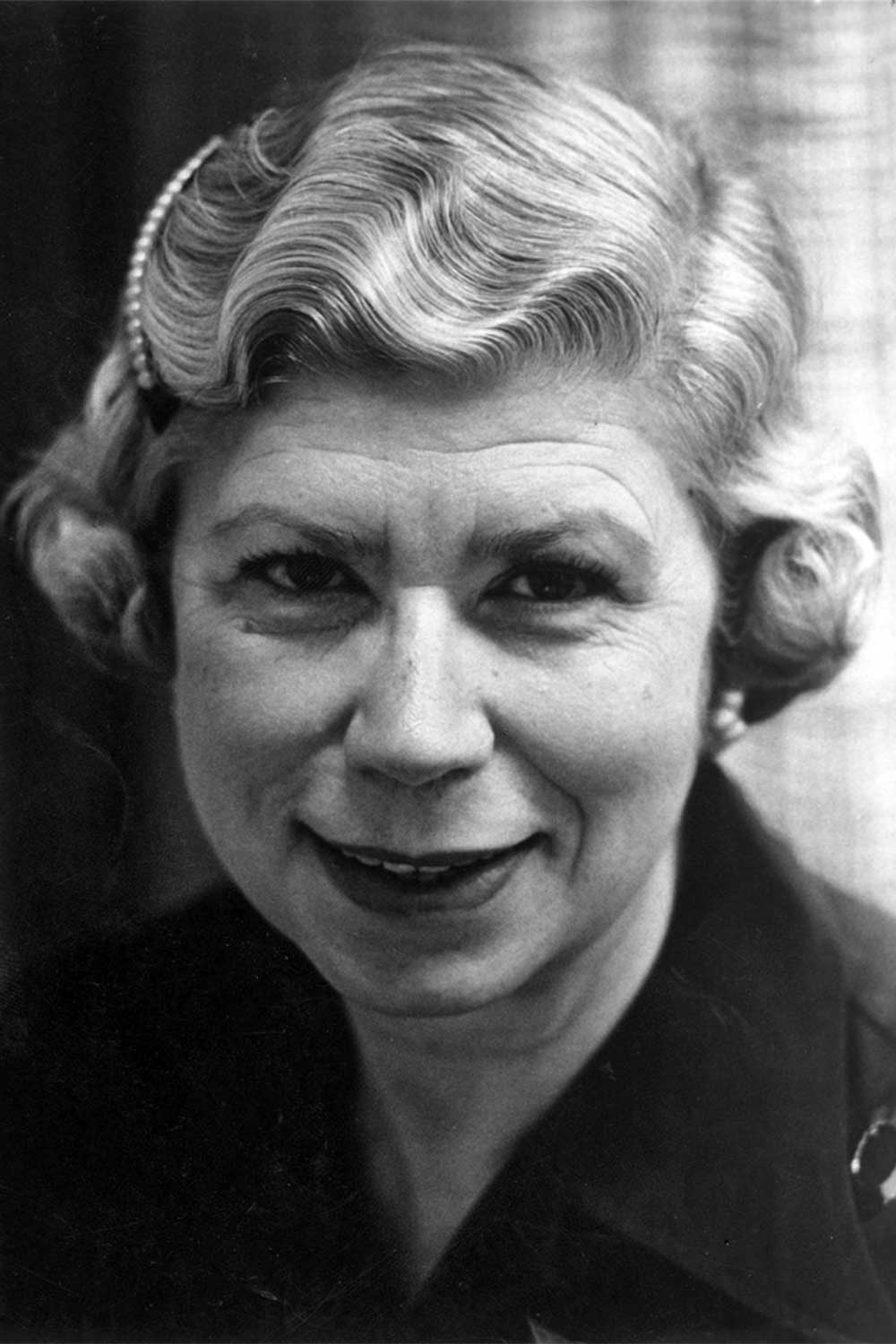
Planning Visionary
Betty Niven
(1918-2002)
It’s possible to divide Eugene into two eras: the before-Betty-Niven era and the after-Betty-Niven era. Niven, who came to Eugene with her UO math professor husband, Ivan Niven, in 1947, got pulled into urban planning when she went to the city to request sidewalks in her neighborhood. In 1959 she was the first woman appointed to the Eugene Planning Commission, and was instrumental in creating and leading a community goals conference. It got people talking about how we shape a city, about process, about affordable housing, about avoiding endless sprawl. When the state created a new housing agency, Niven ensured there was a citizen group attached.
Often the only woman at a table, she countered the notion of women-as-emotional by showing up with facts, with data. As the state refined its land-use planning rules to protect farming and forestry, Niven made sure affordable housing didn’t get lost in the discussion.
John Van Landingham, a Eugene attorney and activist for affordable housing, wrote In the Oregon Planning Journal that her work gave a meaningful tug to Eugene’s planning strategies. Before her, it was all about creating the infrastructure to handle growth. She nudged planning officials to use community goals to guide growth.
Enlarge
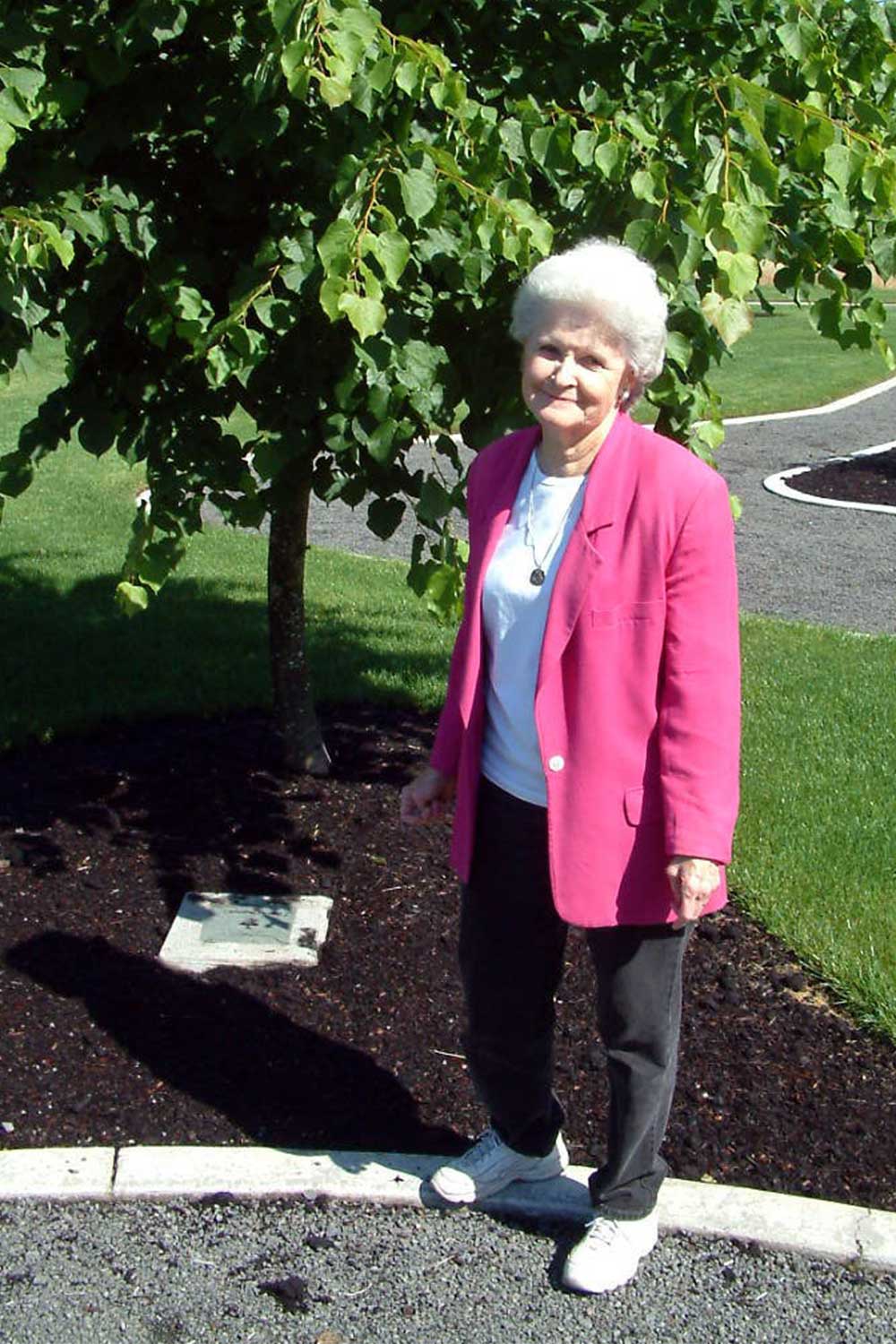
Eugene Mayor
Ruth Bascom
(1926-2010)
It’s not hard to understand why bicycling enthusiast Ruth Bascom liked Eugene. A woman who previously lived in frigid Chicago and Minneapolis, she could bike year-round here. She got herself a spot on the Eugene Bicycling Committee in 1971. That led to a community goal of a walking/biking path stretching along both sides of the Willamette River. Later she was elected to the City Council and became mayor in 1993, serving one term.
Bascom’s vision became a reality when the 13-mile Ruth Bascom Riverbank Path System was completed in 2003. And that’s not all. She wanted a livelier downtown, one whose main intersection — Willamette and Broadway — had been shuttered to traffic but had never attracted pedestrians. That area is now a lively zone of restaurants, theaters, galleries and bars. It’s hard to even recall its previous version. One more thing: She and her husband, John Bascom, donated $100,000 to the city, a gift to honor Bascom’s mother, for the creation of the Hays Memorial Tree Garden in Alton Baker Park. You’ll find it just north of the Cuthbert Amphitheater.
Enlarge

Artist
Lotte Streisinger
(1927-2017)
Sometimes life delivers aha moments. One came for Lotte Streisinger when she visited Peru and fell in love with a village crafts market. A skilled potter, she imagined a similar market here that would give artisans a place to sell their work. A Jew born in Germany, Streisinger came to the U.S. with her parents in 1938, escaping the genocide of World War II. She and her husband, George Streisinger, moved to Eugene, where he was a founder of the newly created Institute of Molecular Biology at the UO. She and a group of friends founded Saturday Market, which opened in 1971 and is often credited with being the oldest local crafts market in the country. Streisinger was its tireless advocate. Her efforts led to the robust and lively market we have today, with its food booths, entertainment and farmers market nearby.
Enlarge
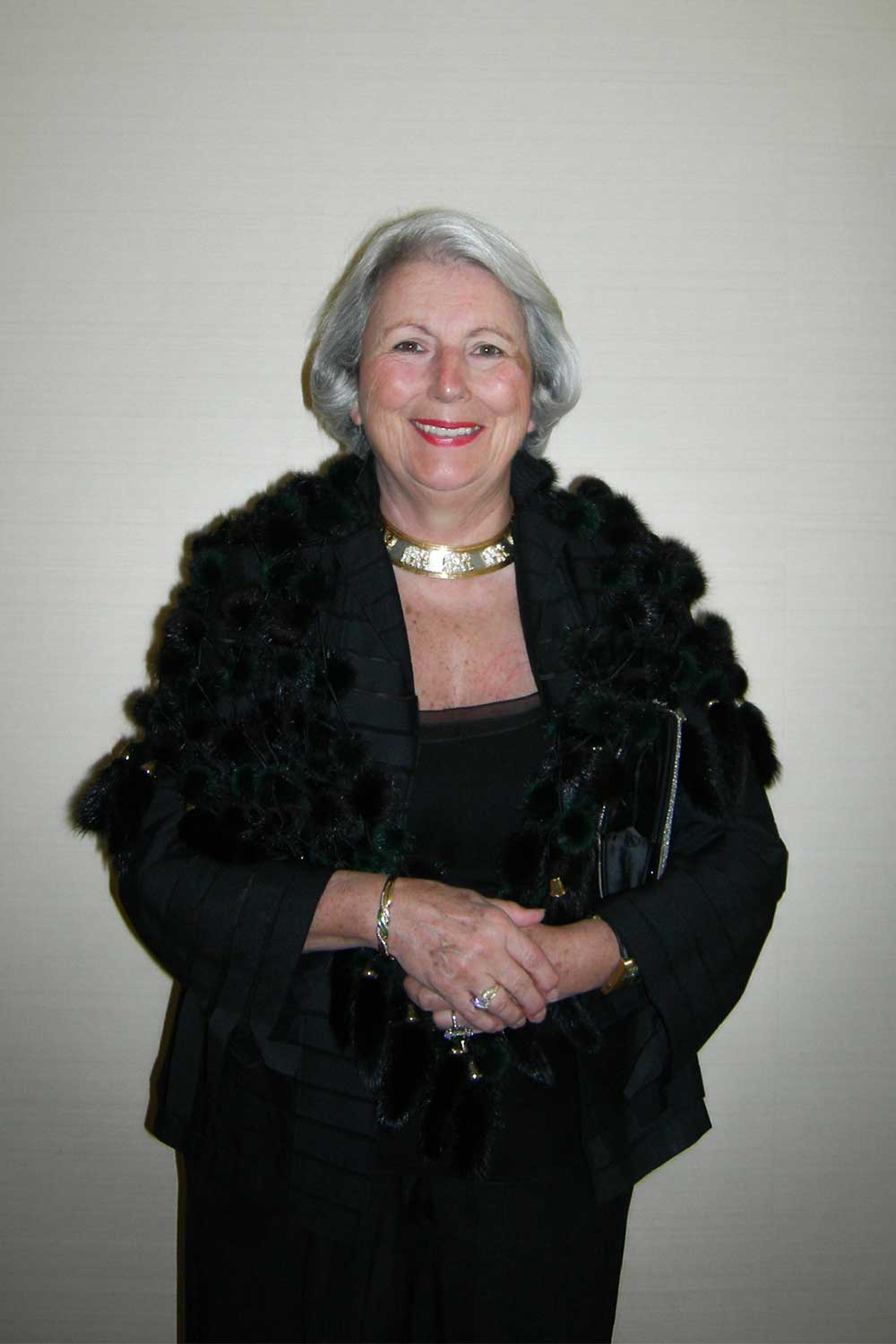
Businesswoman
Carolyn Chambers
(1932-2011)
Women head prominent corporations today, no question. But in the late ’50 and early ’60s, not so much. Carolyn Chambers, the only woman in her UO graduating class to earn a business degree, didn’t have a huge number of female examples for how you dig in and start up. Fortunately, she had vision and the initial support of parents who invested in her dream to start a business. Imagine her trajectory, not in the form of a to-do list but rather as a got-it-done list:
Launched a communications company, Chambers Communications, that included four Oregon TV stations and cable companies in four states.
Helmed a construction company, Chambers Construction.
Bought a winery.
And, oh yes, raised five children, founded a charity that continues to support local nonprofit agencies, and supported fundraising efforts that helped build Eugene’s Hult Center and contributed to her alma mater.
It wasn’t smooth sailing, and there were setbacks. But Chambers stands as an example of what’s possible, regardless of how things were done, and by which gender, before you showed up.
Enlarge
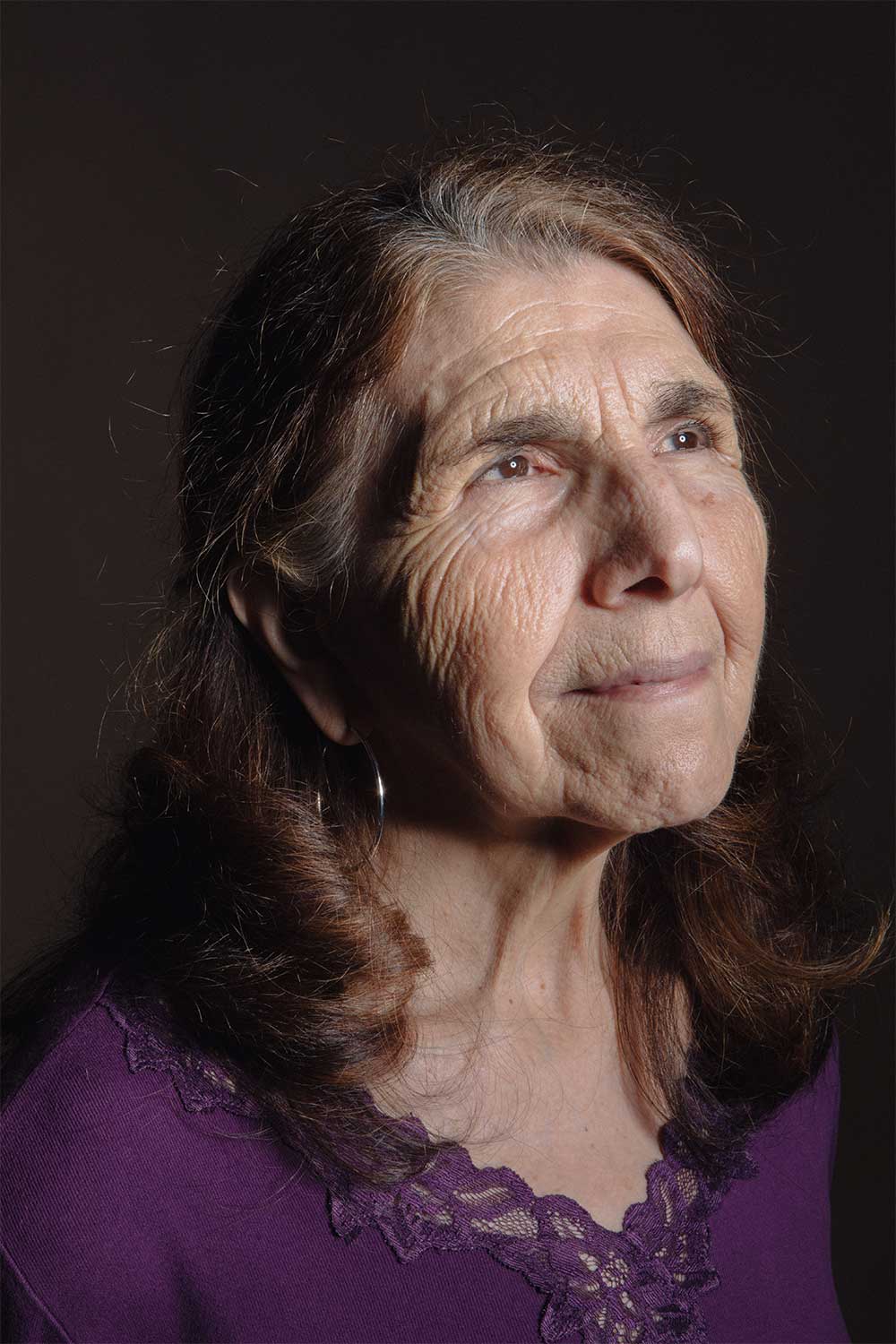
Immigration Activist
Guadalupe Quinn
(1947-present)
Guadalupe Quinn came to activism almost accidentally. Born in Mexico, raised in California, she became a U.S. citizen when she graduated from high school. She and her husband moved to Eugene in 1978. It was a newsletter asking anyone who spoke Spanish to help out with the Sanctuary movement that drew her in. Sanctuary, in the late 1980s, sought to help Central American refugees fleeing violence. Before this Quinn said she wasn’t much of an agitator, but her contact with immigrants changed that.
Since then Quinn has worked to smooth the way for immigrants — regardless of legal status — at the local, state and national levels. She’s served with organizations that support immigrants such as Centro Latino Americano, and she’s worked for Causa, a national organization supporting migrant workers.
Because Oregon has such a vibrant farm and forest industry that relies on immigrant labor, they represent 13 percent of the workforce here. And almost 10,000 DACA youth live here.
Quinn was particularly responsive to the fallout for families during the late 1990s, when federal officials raided workplaces to deport people, tearing families apart in the process. Among her efforts has been to help them be prepared for such emergency disruptions.
As a bilingual U.S. citizen, Quinn’s goals are clear: “I want to do all I can to advocate for families and kids,” she says.
There is no specific edifice, no bike path, no Saturday Market that marks Quinn’s contribution. Instead, as she reminds us, people who contribute to the community deserve the dignity of some kind of legal status.
The last several years have been challenging as federal policies have shifted, and it feels like things are at a standstill. Still, she says she has hope.
“What gives me hope is knowing that there’s a whole lot of people that are doing what it takes in big and small ways that make a difference. And I’m so grateful to see the young leadership coming in and committed to doing the work,” she says.
Enlarge

Kalapuyan Storyteller/Historian
Esther Stutzman
(1942-present)
Wrap your head around the losses suffered by Oregon’s Indigenous tribes: Start with two plagues that decimated their populations by as much as 80 percent. The few natives who survived were pushed onto small reservations. Changing federal laws took more land, stripped their tribal status and then restored it again. It would have been easy to disappear. But they didn’t.
Esther Stutzman — part Coos, part Kalapuyan — has spent her life learning and sharing the stories and traditions of the people who lived in the southern Willamette Valley for thousands of years.
“I learned these stories from my mother and my aunties,” says Stutzman, who grew up in Coos Bay and now lives in Yoncalla.
Sharing those stories with all of us has been her life’s work. Most important, Stutzman and her granddaughter, Aiyanna Brown, teamed up with linguist and retired teacher Paul McCartney to create the first Kalapuyan dictionary, which, thanks to a grant and a GoFundMe campaign, recently had its first printing.
Scholars believed the Kalapuyan language was dead. Stutzman and her family breathed it alive.
Why work so hard to preserve this record? “A very wise friend, a relative who is a Coos Indian said, ‘The loss of one culture is a loss to all cultures,’” Stutzman says.
Enlarge
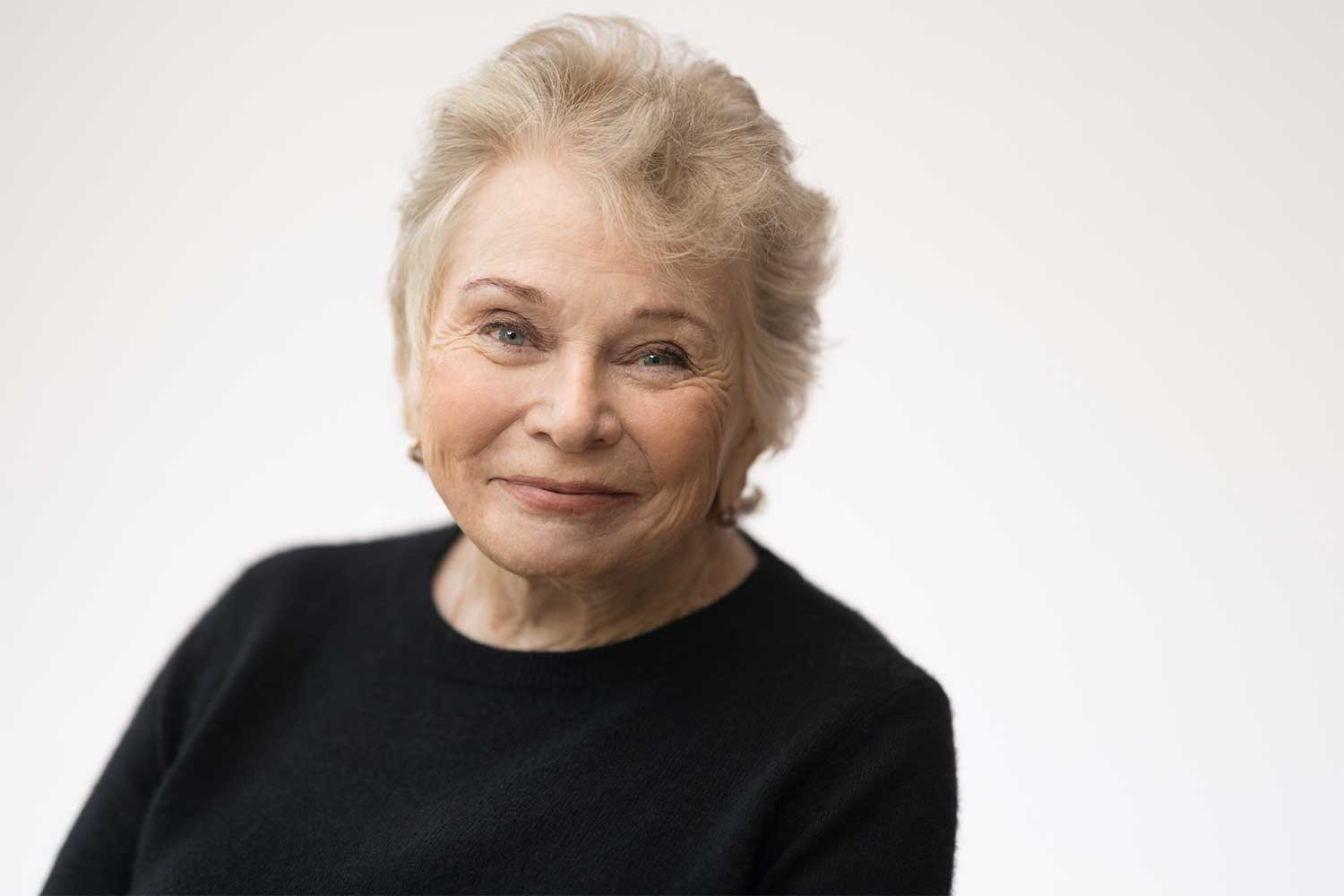
Politician
Cynthia Wooten
(1949-present)
Ok, first a disclaimer. To call Cynthia Wooten a politician is like calling a tsunami a wave. Stuff happens around her. Big stuff, little stuff. When Wooten and her husband at the time, Bill Wooten, rolled into Eugene in the late 1960s, they opened a coffee shop, The Odyssey, across the street from where the Hult Center would eventually stand. The people who gathered there, with Cynthia Wooten always in the thick of it, were the ones who came up with some of our iconic traditions: The Oregon Country Fair, the Eugene Celebration, the Saturday Market.
You talk to people from that era and they often point to Wooten. From the coffee shop, she moved on — to serve on the Lane Education Service District school board, to the City Council to the state Legislature. It’s not enough to have good ideas, she says. They need to be buttressed by laws.
As with all of the women mentioned here, Wooten deserves her own much larger chapter. There are stories inside Wooten stories. So we’ll make do with one.
The Hult Center, paid for by Eugene residents and owned by the city, was scheduled to celebrate its grand opening in 1982, and Wooten felt like all of Eugene ought to be invited. She got permission, she pulled a team together and organized a massive street party.
“Twenty thousand people showed up,” she recalled. “It was so thrilling that people wanted to share in this jewel.”
So they did it again the following year, and the one after that, too. And pretty soon, the Eugene Celebration with its iconic parade and hilarious yet oddly charming SLUG Queen contest was a yearly event.
Time has not been kind to this big party. It had a lot of moving parts. It cost a lot of money. It’s been several years since Eugene last pulled it off, though the parade and the SLUG Queen contest continue.
These days Wooten lives in California, but comes back often because Eugene is still in her heart. When she looks to the future, she imagines a rebirth of that spirit of adventure and inclusion.
“It was all just an incredible time,” she said.
